In a previous tutorial – Arithmetic Circuits, digital circuits for performing arithmetic operations were designed. Like Arithmetic operations, comparison of numbers is also an important mathematical operation. From computing perspective, the comparison of numbers plays vital role in decision making and logical operations. In digital systems, the numbers are in the form of binary numbers. The comparison of two numbers determines whether one number is greater than, equal, or less than the other number. A digital comparator is widely used in combinational systems and is specially designed to compare the relative magnitudes of binary numbers.
For comparing two binary numbers, first their MSB (Most Significant Bits) are compared. If the MSB of one these numbers is 1 while of other is 0, then it is greater than the other and the process of comparison ceases. If their MSB are equal like both are 1 or 0, then the next significant bit is compared in both numbers. If the next significant bit of one of these numbers is 1 while of other is 0, then it is greater than the other and the process of comparison ceases there. Otherwise, it continues to less significant bits until it is determined which number is greater or both numbers are found equal after comparing LSB (Least Significant Bit) of the numbers. So, if two numbers A and B are compared then, the result of comparison is that either A > B, A < B or A = B.
In microcontrollers and microprocessors, digital comparators for comparison of binary numbers are in-built. A digital comparator can be 4-bit, 8-bit, 16-bit, 32-bit or 64-bit system depending upon it compares 4-bit, 8-bit, 16-bit, 32-bit or 64-bit numbers respectively. More than one comparator can also be connected in cascade arrangement to perform comparison of long numbers. Like two 4-bit comparators can be cascaded for comparison of 8-bit numbers. A comparator produces three outputs as L, E and G which corresponds to less than, equal and greater than results.
There are also discrete ICs available for comparison of binary numbers. In this project SN7485 IC is used which is a 4-bit magnitude comparator. The two 4-bit numbers are input to the IC through a DC supply via 8 position DIP switch. The result of the comparison is verified by connecting LEDs at the output pins of the IC.
Components Required –

Fig. 1: List of components required for making 7485 IC based 4-Bit Magnitude Comparator
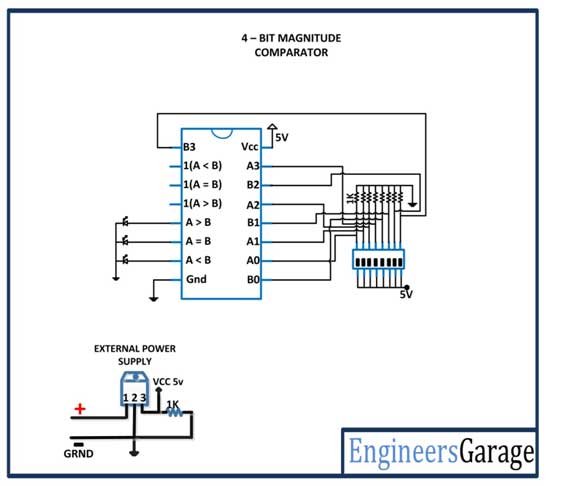
Fig. 2: Circuit Diagram of SN-7485 IC based 4-Bit Magnitude Comparator
Circuit Connections –
For comparison of 4-bit numbers, SN7485 IC is used in this project. The IC is a 4-bit magnitude comparator which can be used for comparison of straight binary numbers and BCD coded numbers. The 16-pin IC has the following pin configuration –
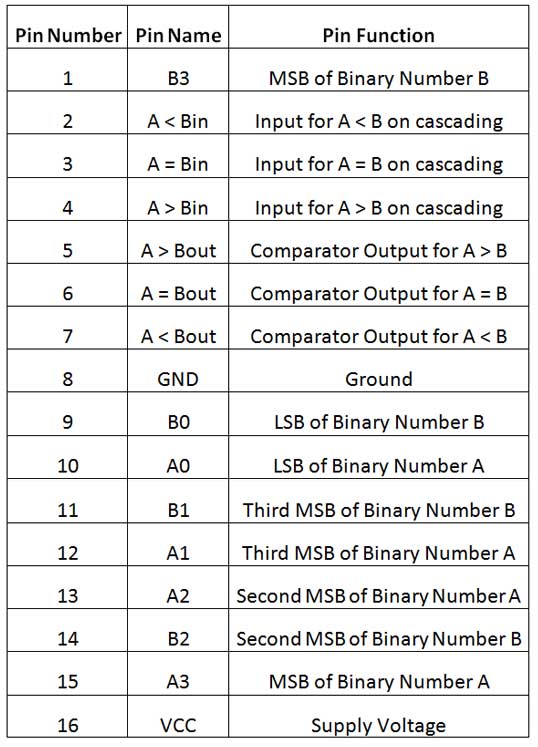
Fig. 3: Table listing pin configuration of 7485 IC
The IC has the following pin diagram –
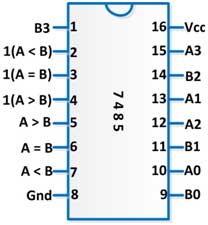
Fig. 4: Pin Diagram of 7485 4-Bit Magnitude Comparator IC
It can be noted that the SN7485 have additional input terminals that allow more individual comparators to be “cascaded” together to compare words larger than 4-bits with magnitude comparators of “n”-bits being produced. These cascading inputs are connected directly to the corresponding outputs of the previous comparator to compare 8, 16 or even 32-bit words. In this project, simply two 4-bit numbers are compared, so there is no need f cascading.
The input binary numbers are passed to the IC to the respective input pins via an 8-position DIP switch. The result of comparison is verified by connecting LEDs at output pins 5, 6 and 7 of the IC.
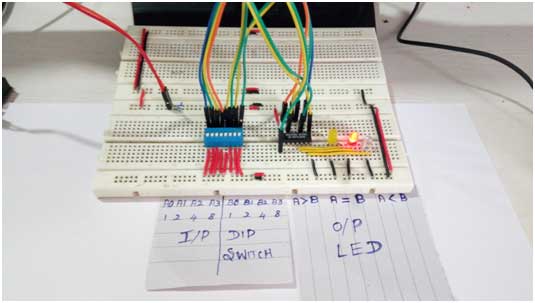
Fig. 5: Prototype of SN7485 IC based 4-Bit Magnitude Comparator
How the circuit works –
The circuit is based on the working of the SN7485 IC. When the two numbers are input through the DIP switch where switches are connected to regulated 5V DC supply, the IC performs comparison of the two 4-bit numbers and depending upon the result of the comparison, one of the three output pins is set to HIGH. The LEDs are connected at the output pins of the IC such that on HIGH output they start glowing. So, if number A is greater than number B, the LED connected at pin 5 will start glowing. If both numbers are equal, the LED connected at pin 6 will start glowing. If number A is less than number B, the LED connected at pin 7 will start glowing.
These type of digital comparators are used in the address decoding circuitry in computers and microprocessor based devices to select a specific input/output device for the storage of data.
They are also used in control applications in which the binary numbers representing physical variables such as temperature, position, etc. are compared with a reference value. Then the outputs from the comparator are used to drive the actuators so as to make the physical variables closest to the set or reference value. Like the digital comparators are used in applications like process controllers and servo motor control.
Testing the circuit –
The output of the circuit can be tested by passing different 4-bit binary numbers to the input pins of the 7485 IC. On comparison of the two binary numbers, either of three output pins will be HIGH and the respective LED will start glowing. The following observations were made on working with the 7485 IC

Circuit Diagrams
Filed Under: Digital Electronics, Tutorials

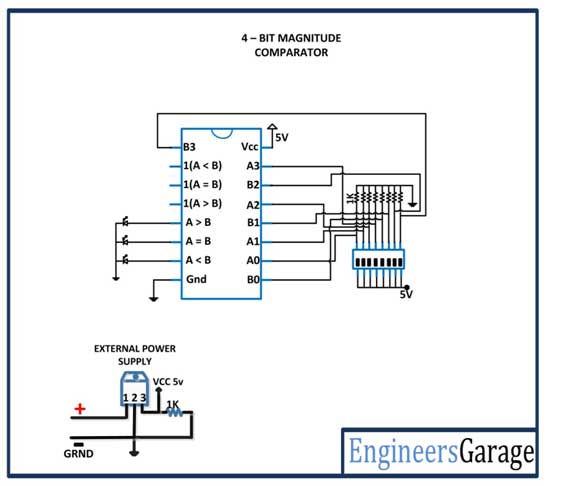

Questions related to this article?
👉Ask and discuss on EDAboard.com and Electro-Tech-Online.com forums.
Tell Us What You Think!!
You must be logged in to post a comment.